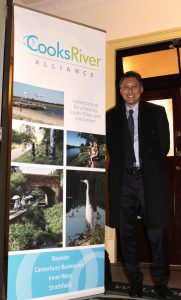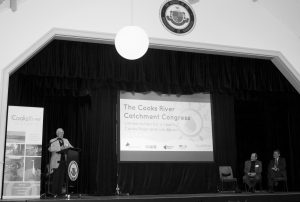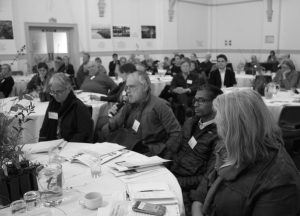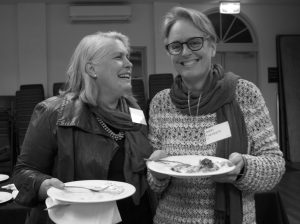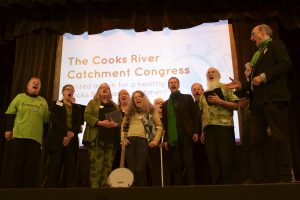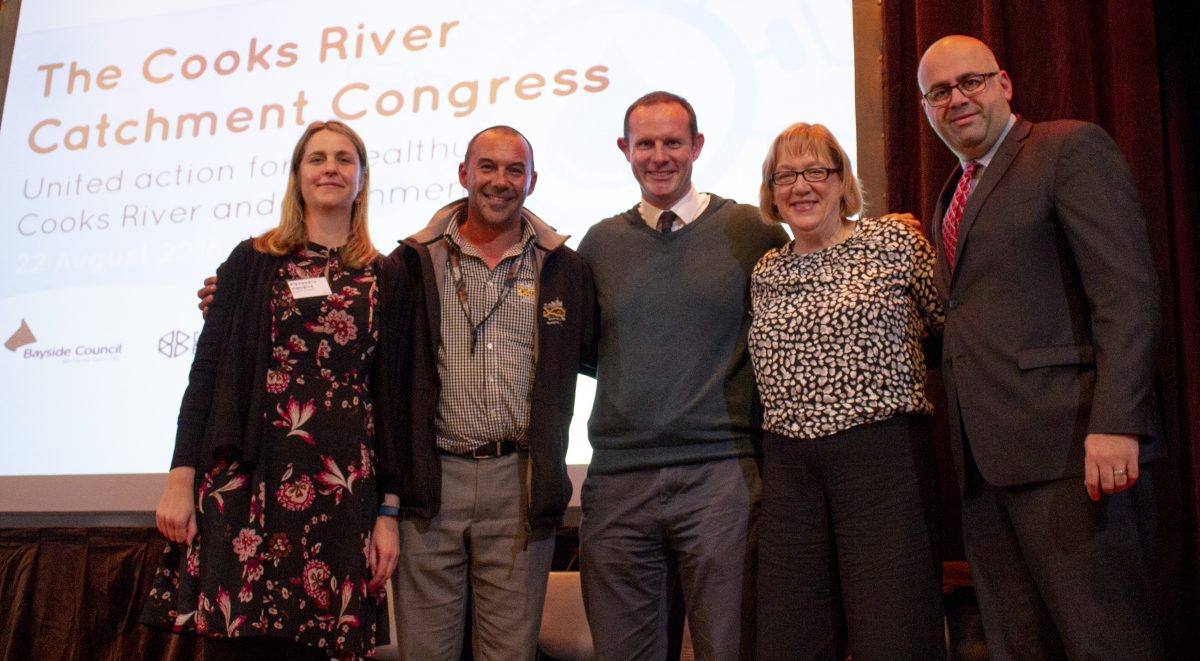
The Cooks River Alliance is inviting all water and land managers, community groups and government agencies across the catchment to join the Cooks River Catchment Congress.
The Cooks River Catchment Congress enables a whole of catchment approach across many different organisations. Working with the Alliance, it provides an opportunity to plan collaboratively to improve the health of the Cooks River and catchment.
Launching the Alliance’s new strategic plan, The Cooks River People’s Plan, at the inaugural Cooks River Catchment Congress meeting on August 22, Cooks River Alliance Chair and Inner West Mayor Darcy Byrne said,
“The Cooks River People’s Plan is a blue print for how we can all work together to make sure that our vision for the river – to be rehabilitated, to be made liveable for all forms of life, and to be a place where the people of Sydney can come to enjoy natural habitat – can be brought to life. In a catchment so large and diverse the prerequisite for any successfully implementation of this plan is unity.”
“We need to bring together not just ourselves, not just the usual suspects, but everybody who has a stake in the health of the catchment – all of the people who would like to make use of the Cooks River if it were in a healthier state.”
Communities in the Cooks River
Also speaking at the congress, Nathan Moran, CEO of the Metropolitan Aboriginal Land Council, emphasised the importance of a healthy waterway to all people.
“At the heart of my Goori culture is the fact that we are only as healthy as our environment,” said Moran.
“We can and we must preserve what is common to us all…and that’s our environment. Water is the ultimate resource.”
“It’s provided lifestyles and sustenance, even in postcolonial times. Hopefully one day we’ll get back that shared sense of belonging and responsibility to ensure that water is preserved and prevails for everyone.”
Cooks River Alliance Deputy Chair and Strathfield Council Councillor Maryanne Duggan, paid tribute to Aboriginal people’s great connection to the natural environment developed over thousands of generations.
“Aboriginal peoples trod lightly on the environment, a lesson we could well heed today as we continue to struggle to repair the impact of European settlement and face further threat from inappropriate developments and urbanisation along the catchment,” said Cr Duggan.
Professor Tony Wong, CEO of the Cooperative Research Centre for Water Sensitive Cities (CRC for WSC), emphasised that increasing population pressures in the catchment require a rethink of how urban renewal and development is carried out.
“Some of the work that the CRC has done demonstrates that cities can be transformed to provide ecosystem services. Natural systems, nature-based solutions, green infrastructure or rain gardens can all be imbedded into future development such that it can start to repair the catchment and the quality and hydrology of what comes off the catchment. This provides a fighting chance for the waterway to repair itself from an ecological health perspective.”
Ecological health is a priority for community, as highlighted by the City of Canterbury Bankstown’s new community strategic plan.
“We asked the community – ‘What does a Clean & Green City look like in 10 years’? This is what they said, ‘Safe, green, clean, growing local food, with healthy waterways and protecting our natural environment’”, said City of Canterbury Bankstown Mayor Khal Asfour.
Speaking on behalf of Bayside Council’s General Manager Meredith Wallace, Alexandra Vandine highlighted how access to quality open space is critical in creative liveable, connected communities.
“Open space has been shown to increase urban residents’ levels of physical activity; reduce the likelihood of being overweight or obese; and lower the incidence of stress and depression. This is as well as its more commonly valued features of reducing noise levels; lowering pollution; reducing flooding and providing habitat to Sydney’s diverse indigenous plants and animals”.

Cooks River Catchment Congress 2018
Planning for the Cooks River
Professor Bruce Thom, Chair of NSW Coastal Council, acknowledged the significance of having NSW coastal management legislation which recognises that land can be lost to the sea in relation to climate change. He stressed the importance of legally mandated coastal management programs which seek to penetrate “bureaucracies” by requiring a multifaceted approach enabled by inter-agency cooperation.
“Local councils have to develop council management programs. Programs to embrace the interests of the people, embrace the interests of governments, embrace the interests of industry. It’s got to have economic, social and cultural components as well as environmental. These have to be brought together in these programs,” Professor Thom said.
“It’s great to see in the Cooks River People’s Plan the recognition of the need for coastal management programs and this Alliance is showing a capacity to be able to deliver.”
Having recently published a history of the various plans for the Cooks River (River Dreams: the people and landscapes of the Cooks River), Professor Ian Tyrrell posed a question asking what would be different about current plans for the river and how can we ensure they don’t fail?
Great Sydney Commissioner Environment Commissioner Roderick Simpson responded by pointing out the unique supporting legal frameworks behind current planning instruments
“The difference is actually the statuary and legal and policy context which hasn’t existed before. That really needs to be recognised as empowering. It’s transferring power to articulate a vision which has legal statuary weight. “
The inaugural Cooks River Catchment Congress was live streamed on Facebook – you can watch the entire event program by clicking here.
Click to view the photo gallery of the Cooks River Catchment Congress.


